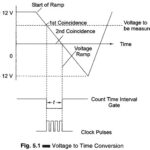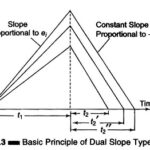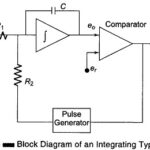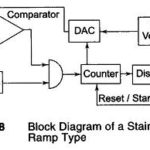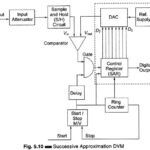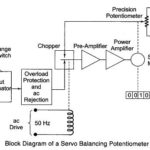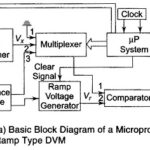Digital Voltmeters Articles:
Digital Voltmeters Features and Characteristics: Digital Voltmeters Features and Characteristics which includes measuring instruments that convert analog voltage signals into a digital or numeric readout. This digital readout can be displayed on the front panel and also used as an electrical digital … (Read More)
Ramp Technique of Digital Voltmeter: The operating principle is to measure the time that a linear ramp takes to change the input level to the ground level, or vice-versa. This time period is measured with an electronic time-interval … (Read More)
Dual Slope Integrating Type DVM (Voltage to Time Conversion): In ramp techniques, superimposed noise can cause large errors. In the dual ramp technique, noise is averaged out by the positive and negative ramps using the … (Read More)
Integrating Type DVM (Voltage to Frequency Conversion): The principle of operation of an Integrating Type DVM is illustrated in Fig. 5.5. A constant input voltage is integrated and the slope of the output ramp is proportional to the input voltage. When the … (Read More)
Principles of ADC (Analog to Digital Conversion): The input signal is compared with an internally generated voltage which is increased in steps starting from zero. The number of steps needed to reach the full compensation is counted. … (Read More)
Successive Approximation Type DVM: The Successive Approximation Type DVM principle can be easily understood using a simple example; the determination of the weight of an object. By using a balance and placing the object on one side and an approximate weight … (Read More)
Continuous Balance DVM: The basic block diagram of a servo balancing potentiometer type DVM is shown in Fig. 5.15. The input voltage is applied to one side of a mechanical chopper comparator, the other side being connected to … (Read More)
Microprocessor Based Ramp Type DVM: A basic block diagram of a Microprocessor Based Ramp Type DVM and its operating waveform is shown in Fig. 5.17 (a) and (b) respectively. Depending on the command fed to the control input of the multiplexer … (Read More)
